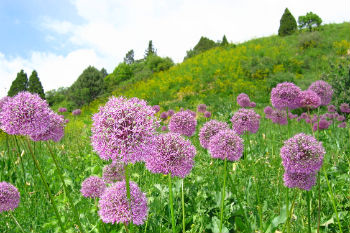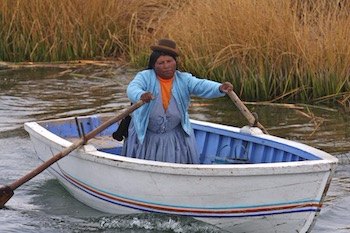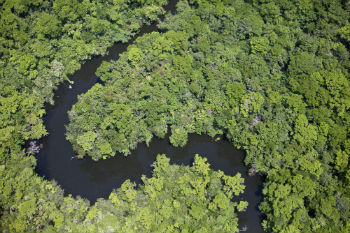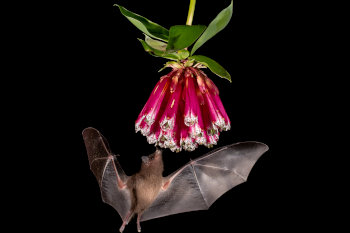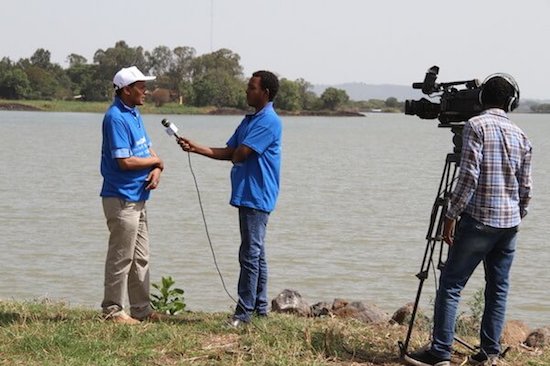Main menu
CEPF is a joint initiative of l’Agence Française de Développement, Conservation International, the European Union, Fondation Hans Wilsdorf, the Global Environment Facility, the Government of Canada, the Government of Japan and the World Bank. A fundamental goal is to ensure civil society is engaged in biodiversity conservation.
Visitez le site français コア情報の日本語翻訳を読むOr use Google Translate to translate the English site to your language:
GTranslate
The Importance of Communicating About Your Work
Sharing information about your project to increase its impact
By: Marsea Nelson, CEPF senior communications manager
12 October 2017
12 October 2017
When developing a project idea, there’s a lot to think about—the budget, timeline and priorities to name a few. Communicating about your project is often an afterthought, if it’s thought of at all. That’s a missed opportunity because sharing your process, challenges and accomplishments can help you make a much bigger impact and pay dividends for your organization down the road.
“To really effect change, your communications strategy needs to be planned from month one. Take it seriously and budget for it,” said CEPF Managing Director Jack Tordoff.
Here’s why you should communicate with different audiences, and the best ways to go about it.
Why you should communicate with your donors
It’s important to show donors, like CEPF, that the investment they’ve made in your organization was money well spent.
They also want to hear about your project so that they can put your results in the context of the larger impact they are trying to make in a region. And they don’t just want to hear about your project if everything went perfectly. (No one’s project does!)
“There’s a fear that reporting anything other than success will affect future funding,” said Tordoff. “The reality is, most funders are very sympathetic to the realities that grantees are working under. Explaining ‘We learned the following lessons and now we want to improve’ generates more credibility with the donor than if you present your work as being an unqualified success.”
How you should communicate with your donors
Donors are looking for specific, quantitative results from your project so they can demonstrate that their investments have, collectively, yielded large-scale results. When you report numbers and achievements, make sure they can be validated and that you can stand behind them. For example: If you reported that you improved the management of 3 million hectares of land, can you prove that? Make sure the answer is “yes” before reporting the results.
Is your project part of a larger effort to protect a place or species? Give donors that context. For example, instead of sharing only that you had a successful meeting with a government official, explain that this achievement was part of a bigger effort by the local conservation community to create a marine protected area.
Giving donors like CEPF the full context and bigger story of your work may also mean providing them with more than just the required reports.
“Often our report formats lead our grantees to undersell and under tell their story,” said CEPF Grant Director Dan Rothberg. “Yes, complete our forms, but then separately tell us your story the way you want to tell it.” That could mean, for example, sending a more informal report in your own language, photos or video.
“I recently had a grantee send me a video of a Komodo dragon walking through the village where his organization is working,” Rothberg said. “It was a shaky, handheld video, but it helped me understand the story of what is happening there. Often grantees don’t realize how important and helpful that kind of information is to donors.”
If you have higher-quality photos or video, sharing those with a donor also has the potential to help your organization reach a wider audience, as the donor may use them in their own communication materials.
Why you should communicate with government and the private sector
Want to make a big impact? You can’t do it alone. Scaling up your efforts often means involving government officials and the private sector. Consider their needs, and do this from the beginning.
Another benefit of factoring in these decision-makers: CEPF and other donors welcome this approach when they’re reviewing grant proposals.
How you should communicate with government and the private sector
Government officials and private sector members typically want information presented in a concise way, such as short policy briefs. Small group briefings—where they can interact with you and ask questions—can also be successful.
“You need constant engagement with these stakeholders so that, when an opportunity comes up, you already have the relationships in place,” Tordoff said.
To make your work relevant to government officials, respond to the problems that they have, and show how your work is helping address those problems. This may require you to involve people who have more experience working with policy or the private sector. They can digest the work that you’re doing and distill that information in the most effective way.
Why you should communicate with the larger conservation community
By providing information about your project—warts and all—you’re helping other conservationists who have the same goals that you do. People want to learn about challenges other grantees have faced and how they dealt with them.
How to communicate with the larger conservation community
This audience is generally interested in more detailed information. Publishing papers in peer-reviewed journals is a powerful way to reach other conservation implementers. Detailed blogs or articles on your website that give insights into what’s working and what isn’t are also very useful. Project briefs or informational sheets could be helpful, too.
Donors like CEPF are often willing to fund in-person exchanges between grantees—consider proposing a project idea that lets you connect with others doing similar work in another region or country.
Why you should communicate with your local community
If you want your ideas about the importance of protecting biodiversity to spread in your community, you need to share what your organization is doing, how you’ve been successful and how it’s benefiting people.
How to communicate with your local community
The best way to reach this audience largely depends on the community where your project is taking place and who specifically you are trying to reach (women or young people, for example). A few ideas that CEPF grantees have effectively used in the past include:
- Radio
- Posters
- Brochures or fact sheets
- Billboards
- Social media
- Public events, presentations or workshops
- Theater
- Newsletters
- Short films
To make the most impact, take time to consider what kinds of media your target audience uses most.
